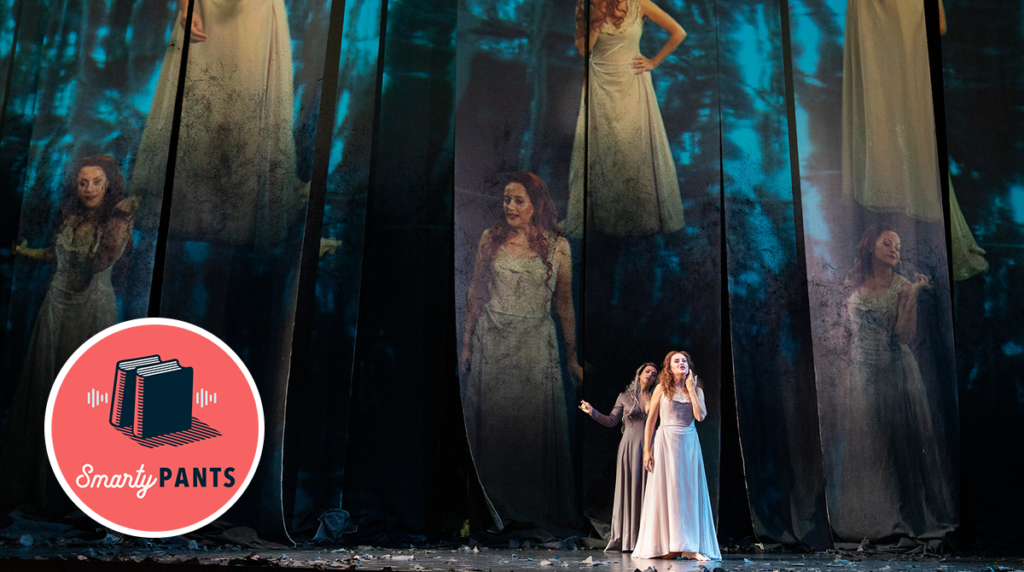
Opera has a bad rap: it’s stuffy, long, convoluted, expensive, weird … and at the end of the day, who really understands sung Italian anyway? The barriers aren’t just financial: there are hundreds of years of musical history at work, along with dozens of arcane terms that defy pronunciation. But opera has been loved by ardent fans for centuries, and the experience of seeing it—once you know what to listen for—can be sublime. So we asked Vivien Schweitzer, a former classical music and opera critic for The New York Times, to teach us how to listen to opera. This episode originally aired in November 2018.
Go beyond the episode:
- Read Vivien Schweitzer’s A Mad Love: An Introduction to Opera
- Catch a free nightly stream of a Metropolitan Opera production
- Listen to the accompanying Spotify playlist
- Ready? Find an opera performance near you by searching the National Opera Center of America’s database of upcoming offerings
- Listen to the Metropolitan Opera’s Saturday Matinee Broadcasts or catch it live in a movie theater near you
- At The Guardian, Imogen Tilde explains “How to find cheap opera tickets”
Songs sampled during the episode:
- “Possente spirito,” the first famous aria in opera, from Monteverdi’s Orfeo
- “Pur te miro,” the first important duet in opera, from Monteverdi’s L’incoronazione di Poppea
- “Svegliatevi nel core,” an example of da capo aria and a rage aria, from Handel’s Giulio Cesare
- The Queen of the Night’s first-act aria, an example of very high soprano notes, from Mozart’s Die Zauberflöte
- “O Isis und Osiris,” an example of very low bass notes from the same opera
- “Ah! mes amis, quel jour de fête!” an example of very high tenor notes, from Donizetti’s La fille du régiment
- “Casta diva,” an example of bel canto style of singing, from Bellini’s Norma
- “Bella figlia dell’amore,” an example of ensemble singing from Verdi’s Rigoletto
- The infamous Tristan chord from the prelude to Wagner’s Tristan and Isolde (and here is the resolution of the chord, hours later)
For a taste of contemporary opera’s eclecticism, here are three examples:
- Das Mädchen mit den Schwefelhölzern by Helmut Lachenmann, an example of an opera with no actual singing
- Satyagraha by Philip Glass, an example of minimalism
- Saint Francois D’Assise by Olivier Messiaen, a composer who imitated birdcalls in his music
Tune in every week to catch interviews with the liveliest voices from literature, the arts, sciences, history, and public affairs; reports on cutting-edge works in progress; long-form narratives; and compelling excerpts from new books. Hosted by Stephanie Bastek.
Subscribe: iTunes • Feedburner • Stitcher • Google Play • Acast
Download the audio here (right click to “save link as …”)
Have suggestions for projects you’d like us to catch up on, or writers you want to hear from? Send us a note: podcast [at] theamericanscholar [dot] org. And rate us on iTunes!
Our theme music was composed by Nathan Prillaman.

